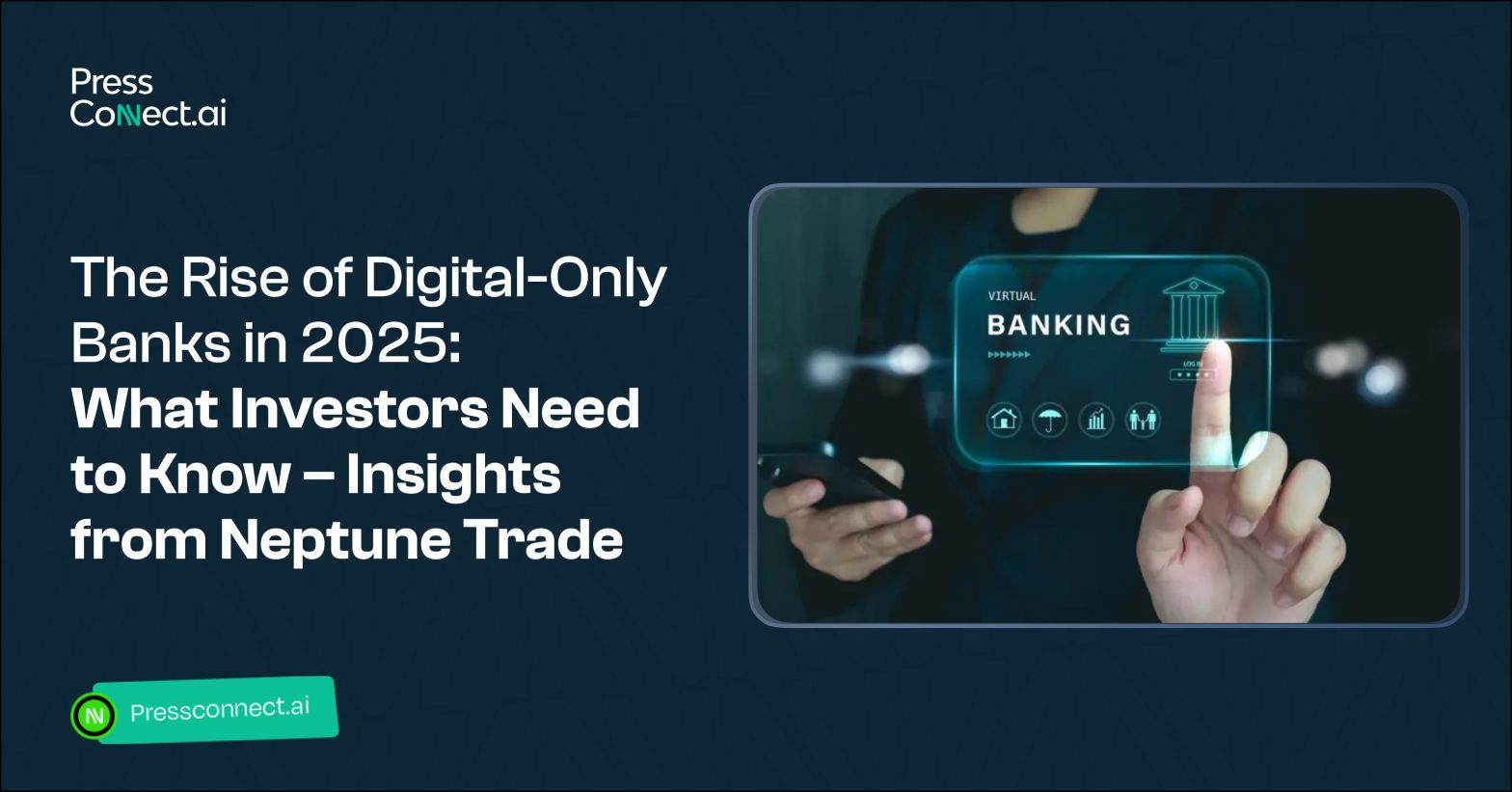The Rise of Digital-Only Banks in 2025: What Investors Need to Know – Insights from Neptune Trade
Digital-only banks should be considered a permanent and integral part of the evolving global financial infrastructure, as technology has transformed customer behavior. The year 2025 will see application-based institutions, or neobanks, spreading their growth across all continents, as young consumers align with the combination of fast services, straightforward interfaces, and digital-first interactions.
Digital banking is experiencing unprecedented growth in established North American markets and rapid expansion in Latin American countries.
“Digital-only banks are not just a trend; they reflect evolving consumer expectations and technological advancements.”
Peter Singer, Managing Partner, Neptune Trade
What Are Digital-Only Banks?
Recent bank structures exist without physical branches. All banking core services, including money transfers, budget tools, and savings services, are available through mobile applications and web platforms provided by these banks.
These banking institutions function differently from the usual banking systems because of two main factors:
- Offering real-time financial insights
- Minimising or eliminating fees
- Providing streamlined onboarding in minutes
- Emphasising intuitive, mobile-first design
Revolut, Chime, and Nubank are three major digital banking companies that utilize customized banking approaches to attract widespread customer adoption.
Digital Banking Growth in 2025
According to forecasts from Fortune Business Insights, neobanking is expected to expand rapidly between 2025 and 2032, which indicates that the market will grow from $210 billion to over $3.4 trillion, representing an annual growth rate exceeding 49%.
RFI Global reports that digital-only banks have captured 31 percent of US households in the market, demonstrating substantial changes in financial practices.
Digital banking penetration in Brazil is stronger since almost fifty percent of people bank online. The ongoing growth of neobank services is projected to exceed 57% over the next two years, as these banks add additional financial products to their suite.
Key Trends Shaping Digital-Only Banking
- AI-Driven Personalisation
Internet-based systems utilize artificial intelligence technology to offer highly personalized features for automated savings, as well as transaction analysis. Banks moved past their position as service providers to establish themselves as active financial partnership entities.
- Embedded Finance
Financial tools have begun integrating into popular apps where users already spend their time, thereby enabling convenient payment transactions, as well as loans and insurance options, outside traditional banking institutions.
- Sustainability & ESG Tools
Neobanks have begun implementing features related to carbon footprints and personalized ESG goal tracking, as they cater to customers seeking sustainable financial solutions.
- Open Banking Integration
Open banking expands globally by enabling users to integrate their accounts and explore various financial products, as well as receive personalized service from providers through a single central dashboard.
Market Leaders and Global Case Studies
Several digital banks are emerging as global leaders:
- Revolut: With over 50 million users worldwide, Revolut continues to diversify, offering access to crypto, stock trading, and cross-border remittances.
- Nubank: Latin America’s most prominent neobank has seen explosive user growth by providing no-fee accounts and simplified digital credit lines.
- Chime: Dominating the U.S. neobank market, Chime is especially popular among younger users looking to avoid traditional banking friction.
These examples reflect the broader maturity of the sector — digital banks are no longer startups testing ideas; they are scaled businesses reshaping the financial infrastructure.
What This Means for the Future of Finance
Neobanks are fundamentally changing the banking landscape. Traditional institutions are under pressure to digitise core services or partner with fintechs to stay relevant. For many younger consumers, digital-only banks are the default, not the alternative.
“At Neptune Trade, we’re closely monitoring how these innovations are changing capital flows, customer behaviour, and institutional positioning.”
Peter Singer, Managing Partner, Neptune Trade
This momentum has implications far beyond retail banking. Institutional investors, infrastructure providers, and regulators are all being pushed to adapt to this increasingly digital-first financial reality.
Conclusion
The rise of digital-only banks in 2025 represents more than a passing fintech trend — it signals a long-term reconfiguration of the global financial landscape. With explosive user growth, advanced tech integration, and expanding services, neobanks are transforming the way individuals interact with money.
As the shift continues, those watching closely, like Neptune Trade, are finding new ways to understand and engage with this transformative sector.
Media Information:
Email: [email protected]
Contact: +886277372469
Website: https://neptune-trade.com






